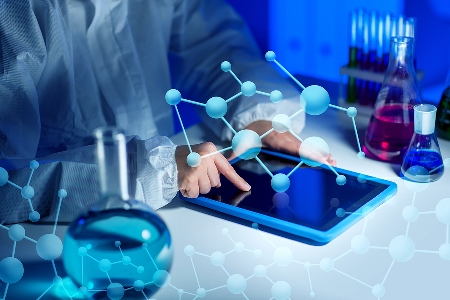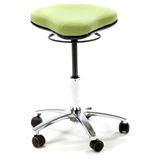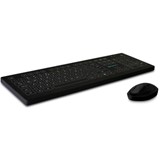Whilst the importance of well known breakthroughs such as the discovery of penicillin and the determination of the structure DNA cannot be denied, numerous lesser known advances have also played a major role in changing the healthcare landscape.
Treatment of stomach ulcers
The general consensus used to be that stress and too much acid caused stomach ulcers; Dr Barry Marshall thought otherwise. He suspected that the ulcers were due to an infection with a bacterium known as Heliobacter pylori.
The problem was that nobody believed Dr Marshall. To prove his point, Dr Marshall consumed a culture of H. pylori, and within a week had developed severe stomach ulcers.
Today stomach ulcers are treated with antibiotics. Finding the treatment for stomach ulcers has also assisted in reducing the incidence of stomach cancer.
The capsule endoscopy
Most people don't like the idea of having a tube with a camera on the end inserted into them for an endoscopy, and for good reason. Since 2001, endoscopy patients have been cooler, calmer and more collected, thanks to the capsule endoscopy.
Invented by Given Imagine, the capsule is swallowed like any regular pill. The capsule features an internal camera which takes photos and video as it moves along the digestive system, transmitting images to an external receiver.
The Bionic Eye
Like its better known sibling, the Bionic Ear, the Bionic Eye has the capability to transform the lives of its recipients. Developed by Bionic Vision Australia, the Bionic Eye looks just like a regular pair of glasses, but takes the viewer's point of view and processes it into an electrical signal that is sent to the brain.
Whilst it does not currently have the capability to fully restore full vision, wearers are able to perceive shapes, colours and shadows.
Remote controlled animals
For decades, neurobiologists have been working to understand how the brain's electrical signals control bodily movement and actions. As a result of their findings, scientists are now able to insert electrodes into the brains of a number of small animal species, and use electrical stimuli to control them.
Not only has this revolutionised the way in which we understand how the brain works, it has also provided crucial information regarding diseases such as multiple sclerosis, stroke and neurodegenerative disorders.
Scientists are currently working on the possibility of using remote controlled rats in disaster situations.
Genetically engineered bacteria
Insulin used to be collected from the pancreas of pigs. Due to a revolution in molecular biology, human proteins can now be produced in bacteria. Genentech were the first to produce human insulin in E. coli in 1978.
This technology has allowed for the production of a range of human hormones, proteins and peptides in huge quantities for a fraction of the cost of alternative methods, with benefits in the treatment of patients with disorders such as diabetes, haemophilia, cystic fibrosis and cancer.
Personal genome sequencing
The human genome project took 13 years, cost US$3 billion and took the work of thousands of scientists to complete. Now for about $1000, patients can have their whole genomes sequenced in an afternoon.
This opens up a whole new level in personalised medicine, with benefits for tailoring cancer treatments as well as helping to increase our understanding of the genetic basis of numerous diseases and how our environment can modify the expression of our genes.
The fecal transplant
Who would've thought that taking fecal matter from a healthy patient and inserting it into a patient with digestive issues would actually address a gastrointestinal ailment.
Our digestion of food and extraction of nutrients is reliant on a plethora of bacterial strains and species. In recent years scientists' understanding of the microbiome has revolutionised how conditions such as irritable bowel syndrome, colitis and clostridium difficile infection are treated.
Lab grown organs
When organs fail, often the only option available is organ transplantation, however with only a small proportion of people willing to donate their organs, many people remain on waiting lists for an extended period of time.
Scientists from Wake Forest University successfully grew bladders under laboratory conditions in 2006 and transplanted them into children with congenital birth defects. These bladders were grown from the patients' own cells, eliminating any compatibility issues.
Scientists are currently working on expanding the types of organs that can be grown, with encouraging progress in growing hearts, stomachs, teeth and veins.
Remote surgery
Telecommunications, robotics and virtual reality have worked together to enable surgeons to perform operations without the requirement of even being in the operating theatre. The first remote surgery occurred in 2001 with surgeons from New York removing the gallbladder of a patient in France.
Whilst not yet widespread, this technology has the potential to allow patients who may not have access to specialist medical care to receive life saving surgery – for example patients in remote settlements, theatres of war or even in space.
CLARITY
Imagine trying to look through a painted glass window - impossible. So you can imagine that understanding the architecture of organs is complicated due to their opaque nature. The most common way medical professionals have examined the structure of tissues is by cutting them into thin sections and performing histological examinations.
CLARITY, based on a polyacrylamide gel, is injected or applied to an organ and allows for the lipids of organs to be removed without compromising the other constituents of the organ, such as proteins. As a result, the tissues are transparent, allowing for simple visualisation of the whole organ.
Why is this revolutionary? Well, this will allow for medical scientists to improve their understanding of organ structure and may also be useful in ensuring all the tissue collected in a biopsy is examined correctly.












